Plumbing Cost Estimator: Installation Cost Guide
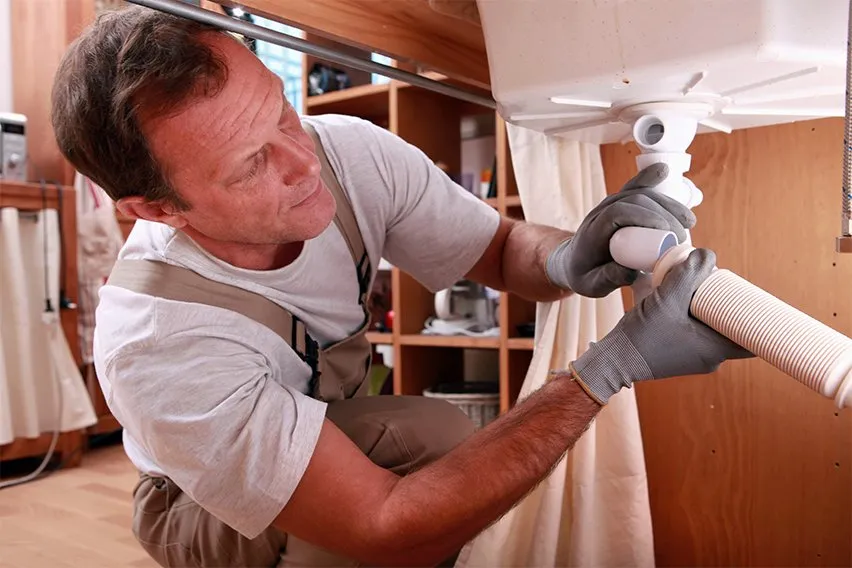
Plumbing jobs from plumbing contractors have a notorious reputation for being expensive. Hourly rates for a licensed plumber tend to be higher, solely based on the difficulty of the job. Plumbing is an involved process and can often hit roadblocks if anything about the job is forgotten. That being said, plumbing estimates are incredibly important. They’re an effective tool for telling a potential customer the potential costs of a job.
Keep reading to understand how to create effective estimates for plumbing and what needs to be taken into consideration.
Key Takeaways
- Creating accurate plumbing estimates helps both you and your client budget for a job.
- A good plumbing estimate will include your hourly wage, timeline, materials costs, and total cost.
- Plumbing jobs typically fall into three categories: installations, repairs, and replacements.
- Plumbing prices can vary depending on the type of job, the size of the home, and how quickly the contract needs to be finished.
Here’s What We’ll Cover:
- Plumbing Cost Estimates
- Types of Plumbing Projects
- Average Cost to Replace Plumbing
- Estimates for Small Jobs
- Estimates for Large Jobs
- Plumbing Inspection Cost
- Steps to Creating a Plumbing Estimate
- Conclusion
- Frequently Asked Questions
Plumbing Cost Estimates
Before we get started, it’s important to understand the urgency behind plumbing estimates. For most buildings to be habitable or usable, working plumbing is required. Often, you’ll find that your clients need their estimates ASAP. That’s because time is money, and the sooner that they can open their business or sell their home, the sooner they make money.
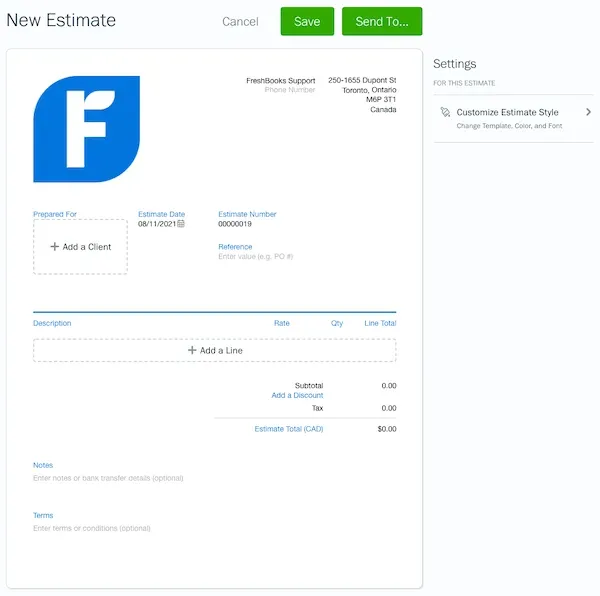
As such, even smaller plumbing jobs like a burst pipe or water heater repair often command a higher price than other services. This means that an accurate cost estimate is extremely important. Even when it comes to everyday plumbing jobs, estimates need to be quick and accurate.

Types of Plumbing Projects
Plumbing projects can be divided into three basic categories—installations, repairs, and replacements. The type of work you’re doing, and the home’s size will impact the plumbing estimate you put together.
Installations
These are the initial operations to install plumbing in your home. This could be installing sewer lines, septic systems, pipes, toilets, sinks, or laundry machines. Installations tend to be the most expensive type of plumbing project, as you’ll usually have to include the materials cost as well as labor.
Repairs
Plumbing repairs are usually a more simple and more affordable project. Because you’re not installing any new elements, materials costs tend to be lower than for initial installations. Repairs are usually quicker to perform since you don’t need to install any new plumbing fixtures. Estimates for larger contracts, like slab leak repair costs, may command higher plumbing prices. It’s important to always do a thorough inspection before creating your estimate.
Replacements
Plumbing replacements usually fall between installations and repairs in terms of cost and time. Particularly if you’re replacing old plumbing with a similar model, the original space and fittings can often be used. However, you’ll have the cost of purchasing the new plumbing fixtures, and it takes more time and labor to fit a new piece than simply to repair an old one.
Average Cost to Replace Plumbing
Plumbing costs will vary depending on your area and the extent of the work needed. For 2025, small projects like sink and toilet replacements cost an average of $200 to $500. Larger projects, like installing new plumbing or replacing the pipes in an entire home, can cost anywhere from $2,000 to $15,000.
Mid-size jobs, like bath and shower replacements, tend to average between $750 to $4,500, and water heater replacements average $600 to $1,300.
Estimates for Small Jobs
Using a home plumbing job as an example, small plumbing jobs can cost anywhere from $100 to $850. Some small jobs are:
- Leak repair (leaking faucet, leaking pipe, etc.)
- Repairing water heaters
- Snaking clogged drains
- Minimal sewer line cleaning
- Toilet repair
These are all considered small jobs. However, careful evaluations for these jobs are required to make sure that they are, in fact, small. Plumbing is an involved part of any building, and what seems like a small job may be a symptom of a larger problem.
Estimates for Large Jobs
Larger home plumbing jobs tend to cost anywhere from $500 to $2,000. These more involved jobs often require replacing items. Large jobs can include::
- Toilet installation
- Repairing burst pipe(s)
- Slab leak repairs
- Sump pump repair or installation
- Septic tank repair
All of these jobs have more involved processes, and they’re often related to other problems. These large jobs can have wide cost ranges, depending on the severity of the damage. If there is damage to other parts of the structure, the costs will compound. While the plumbing may be the most expensive part of the repair, an accurate estimate can manage expectations and. can keep your customer happy. No one wants to pay more than the estimate.
Plumbing Inspection Cost
Before the actual plumbing project, you’ll need to do an inspection to identify what your client needs. Like any plumbing job, it’s important to give potential customers a sense of what it will cost, so even the inspection requires an estimate.
An easy way to estimate inspection costs is to offer a simple hourly rate. Since you don’t know the scope of the job, it can be hard to offer an estimate based on complexity. What if you’re dealing with complex gas lines and other such structures? You may have higher rates for certain tasks if the inspection requires special tools, like a camera. Some plumbers also choose to offer free plumbing estimates at the inspection stage, depending on your preferred business policy.
Steps to Creating a Plumbing Cost Estimate
Use the following steps to create and calculate plumbing costs for your clients.
Step 1: Determine Your Hourly Base Rate
Understanding how much you will charge for your hourly rate is the first step to starting a plumbing estimate. Know your worth and set your rate accordingly. Part of this is knowing your overhead and desired profit margin. Once you know these figures and set your hourly rate, you can write estimates.

Step 2: Bid for Jobs
You’ll need to gather costs associated with the jobs to put together bids. These costs typically include the following:
- Material costs, including taxes
- Permit costs
- Extraordinary expenses (temporary toilets, hand washing stations, etc.)
Put all of this information together and keep it handy.
When you’re creating estimates, it’s important to keep track of your expenses so you can provide any receipts to your client. FreshBooks’ expense and receipt tracking software makes it easy to keep track of your spending. Click here to try it for free.
Also Read: How to Bid a Job
Step 3: Estimate Labor Hours
When looking at jobs, knowing how many labor hours it will take to complete a job is important. Assess whether this is a small job, like a leaking pipe or clogged drain, or something major, like a septic tank replacement. Most clients will want you to stay under your estimated billable hours so that they’re spending less money overall.
Step 4: Calculate Your Total Estimate
Add the figures that you came up with in steps 2 and 3. This will be the total cost of your estimate. You’ll give your potential customer this amount, along with the details outlining the costs.
Here’s a basic formula for creating your estimate:

Your material costs and other expenses will include permits, extraordinary expenses, any required subcontractors, and special equipment.
The estimating process can take a much longer time, and estimating software can help you speed it up.. FreshBooks’ estimating software can send clear and straightforward estimates to potential clients for any type of job—large or small. Once the job is done, the software will convert your estimate into an invoice for quick and easy billing. This process streamlines the above steps, making it easier and faster to create detailed, mistake-free estimates.
Click here to sign up today and start creating winning plumbing cost estimates.
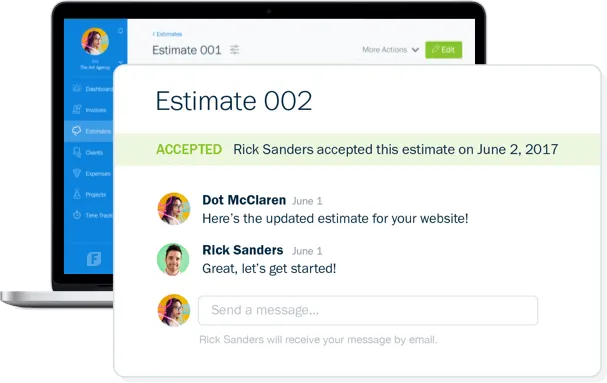
Conclusion
A good plumbing estimate should give you and your customer a clear sense of the timeline and costs. This estimate allows potential customers to set their budget and lets you determine whether the job will be worth your time.
When you estimate plumbing jobs, you’ll need to assess the type of job and the amount of time it will take. You’ll also need to add materials costs, permits, extraordinary expenses, and additional costs like special equipment and subcontractors. Remember to factor in your profit margin so that the job pays you fairly.
If you need more information about estimates, visit our estimates category. We have plenty of information on estimates for all industries.
FAQs on Plumbing Cost Estimator
How much does it cost to put plumbing in a 2000 sq ft house?
The cost to install new plumbing in a 2000 sq ft house averages between $6,000 to $16,000. Your geographical area, the type of plumbing needed, and the number of bathrooms in the home will affect the overall cost. All these considerations should factor into your estimate.
What is the formula of plumbing?
The basic plumbing formula for determining pipe size is Q = VA, where Q is the flow rate, V is the velocity, and A is the area. This formula uses flow rate and velocity to help you decide which pipe size best fits.
What is the profit margin for plumbing?
The average net profit margin for plumbing in 2025 is around 20-40%. This margin may vary depending on how much other plumbers charge in your area and how established you are as a business. To achieve a net profit margin of about 20%, you should operate at about 50–60% gross profit. After you deduct your overhead expenses, like insurance, car payments, and tools, you should be able to meet the 20% net mark.
How much does it cost to replumb a 1600 sq ft house?
The average cost to repipe a house is between $0.40 to $2.00 per foot for the pipe. When you include your hours and any additional costs, a 1,600 sq foot house can range from $3,200 to $7,000. Keep in mind the type of house, the location of current piping, and any damage when you estimate your hours. Working in a moldy or damp environment can increase the difficulty of the job.
How much does plumbing pipe cost?
Plumbing pipe costs can vary greatly depending on the material and size. The least expensive and most commonly used for drinking water are PEX and CPVC. PEX 3/4-inch pipe costs about $0.60 per foot, and CPVC 3/4-inch pipe costs about $0.10 per foot. Copper is about $3.16 per foot for a 3/4-inch pipe.
About the author
Michelle Alexander is a CPA and implementation consultant for Artificial Intelligence-powered financial risk discovery technology. She has a Master's of Professional Accounting from the University of Saskatchewan, and has worked in external audit compliance and various finance roles for Government and Big 4. In her spare time you’ll find her traveling the world, shopping for antique jewelry, and painting watercolour floral arrangements.
RELATED ARTICLES


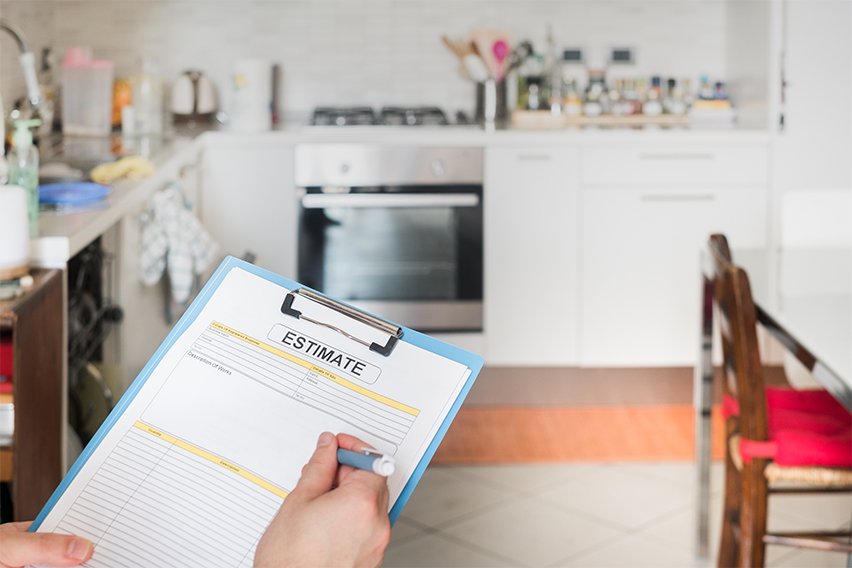 How to Write an Estimate: 2 Ways, Tips & Template
How to Write an Estimate: 2 Ways, Tips & Template How Much Does It Cost to Build a Hospital: Construction Cost
How Much Does It Cost to Build a Hospital: Construction Cost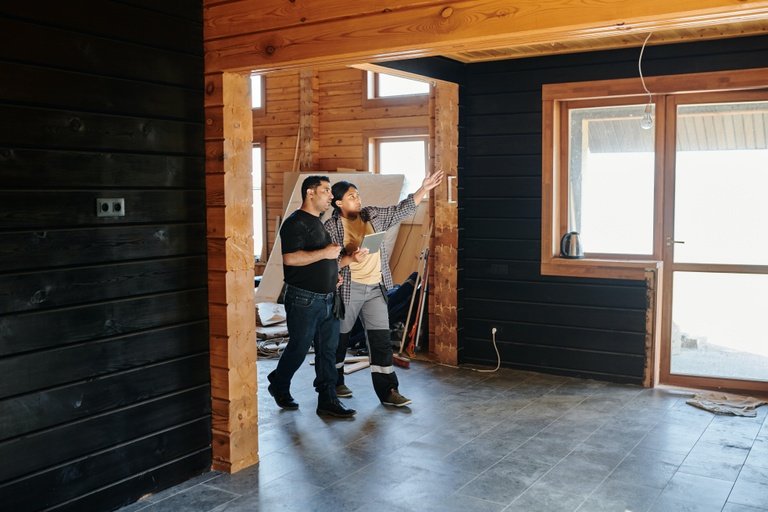 How Much Does It Cost to Build a Restaurant: Cost Guide
How Much Does It Cost to Build a Restaurant: Cost Guide What Is the Average Profit Margin for Construction Industry?
What Is the Average Profit Margin for Construction Industry? Electrical Cost Estimator Work Guide
Electrical Cost Estimator Work Guide 4 Top Construction Estimator App for 2025
4 Top Construction Estimator App for 2025